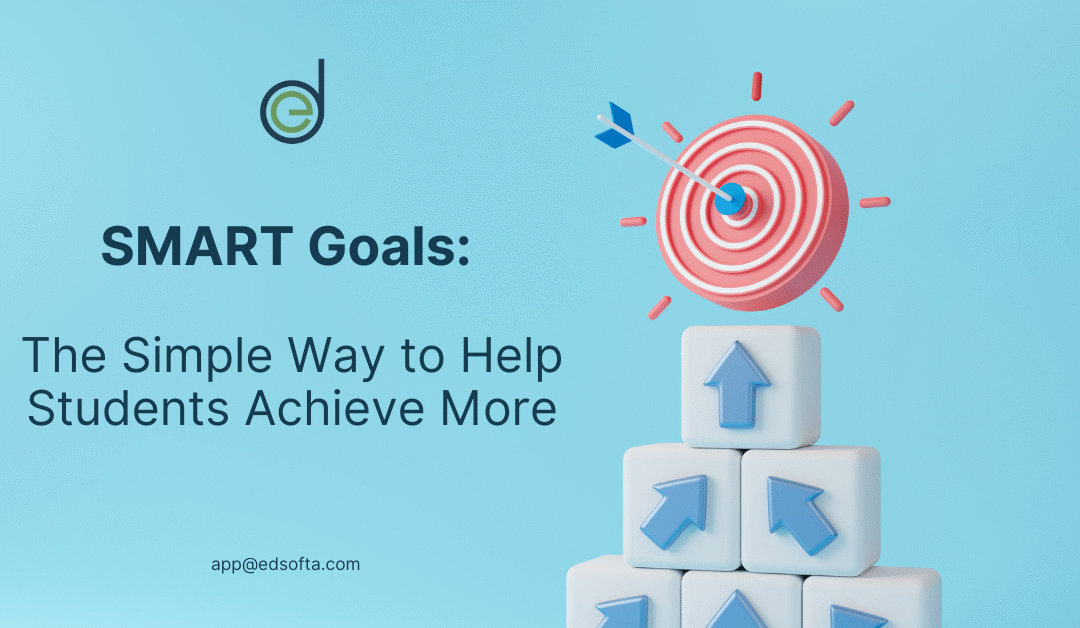Introduction: Why Some Goals Never Stick
SMART goals are one of the most effective tools teachers and school owners can use to help students stay focused and disciplined. Yet, many students still make vague promises, such as “I will study harder” or “I’ll do better next term.”
At first, these declarations sound good, they show intention. But without a clear direction, most students quickly lose focus. They forget what to study, when to study, and how long to study. Within days, that spark of motivation fades away.
Now imagine reframing that same goal:
“I’ll answer Biology past questions for 20 minutes every day for the next three weeks.”
That’s a complete transformation. Suddenly, the goal is not just a wish, it’s a plan, and that’s what makes it SMART.
DUMB vs. SMART Goals: What’s the Difference?
Let’s start by addressing the problem.
When students set what we can call “DUMB goals” (vague, undefined, and directionless), they often end up feeling frustrated or overwhelmed. For example:
“I will read more this term, I will improve my grades, or I will prepare for exams early.”
These goals lack clarity. They don’t specify what to do, how often, or how success will be measured. Without these details, students have nothing to track or celebrate, and eventually, they stop trying.
Now compare that to a SMART goal:
“I’ll read one chapter of my Literature text every evening before dinner.”
This version tells the student exactly what to do, when to do it, and how to measure success. It turns a vague desire into a concrete habit.
Breaking Down the SMART Goals Framework

The SMART method works because it breaks big ambitions into practical, achievable steps. Here’s how to guide your students through each part:
- Specific: Be Clear About the What and How
Encourage your students to move beyond general statements. Instead of “I’ll study,” help them define what subject or topic they’ll study and how. For instance:
“I’ll complete 10 Math practice questions every afternoon.”
Specificity makes goals actionable. When students know exactly what to do, they’re more likely to start and stick with it.
- Measurable: Track the Progress
Students love to see results, and measurable goals make that possible. Encourage them to define progress indicators such as:
“I’ll review 5 new French words each day.”
“I’ll complete two science experiments this week.”
When they can measure their progress, they can celebrate small wins, and that keeps motivation high.
- Achievable: Keep It Realistic
Many students set goals that sound impressive but are simply unrealistic. As a teacher, guide them toward something doable.
For example, rather than “I’ll study for 5 hours daily,” try “I’ll study for 30 minutes after dinner.”
Small, consistent actions are more sustainable than grand, exhausting efforts. Students learn that progress is built step-by-step, not overnight.
- Relevant: Connect It to What Matters
A goal must be meaningful to the student. Help them see the connection between their efforts and their larger aspirations.
For instance, you could say:
“Practising 20 math problems a day will help you master those tricky equations before your exams.”
When goals are personally relevant, students take ownership of their learning, and that’s where true growth happens.
- Time-Bound: Give It a Deadline
Without a time frame, even the best goals lose urgency. Encourage your students to set a time limit, whether it’s “for one week,” “by the end of the term,” or “before my next test.”
Deadlines create accountability and help students develop time management skills, an essential trait for academic success.
The Results of SMART Goals Setting
When students start applying the SMART framework, the transformation is easy to spot. They become more focused, confident, and consistent. Here’s how:
- They Track Progress with Pride
Students can see their improvement every day, whether it’s finishing a practice quiz or understanding a new concept. That sense of progress is incredibly motivating.
- They Stay Motivated by Small Wins
Big results come from small victories. Each completed goal builds momentum, making learning more rewarding.
- They Feel Less Stressed
Because SMART goals are realistic and time-bound, students no longer feel overwhelmed by vague expectations. They know exactly what to do and when to do it.
- Their Confidence Grows
With every step they achieve, their belief in their abilities strengthens. Confidence is contagious; once they feel capable in one subject, it spills over into others.
How Teachers and School Owners Can Apply This

As a teacher or school leader, you play a key role in shaping how students approach goals. Here are practical ways to make SMART goal-setting part of your school culture:
- Integrate Goal-Setting Activities: At the start of each term, have students write down one SMART goal for each subject.
- Track Progress Publicly: Use classroom charts or journals where students update their daily or weekly achievements.
- Celebrate Small Wins: Recognise consistency, not just top grades. A “Most Focused Student of the Week” badge can work wonders.
- Train Teachers to Model It: Let every educator set and share their own SMART teaching goals. Students learn best by example.
By embedding SMART goals into your school’s everyday routine, you help students develop lifelong habits of planning, discipline, and reflection.
Conclusion: Equip Students for Lasting Success
SMART goals go beyond academics, they prepare students for life. When young people learn how to set specific, measurable, achievable, relevant, and time-bound goals, they gain tools to succeed in any area of life.
So, as an educator or school owner, make it your mission to introduce SMART goal-setting today. Encourage your students to start small, stay consistent, and celebrate progress, because every clear, intentional step brings them closer to success.




